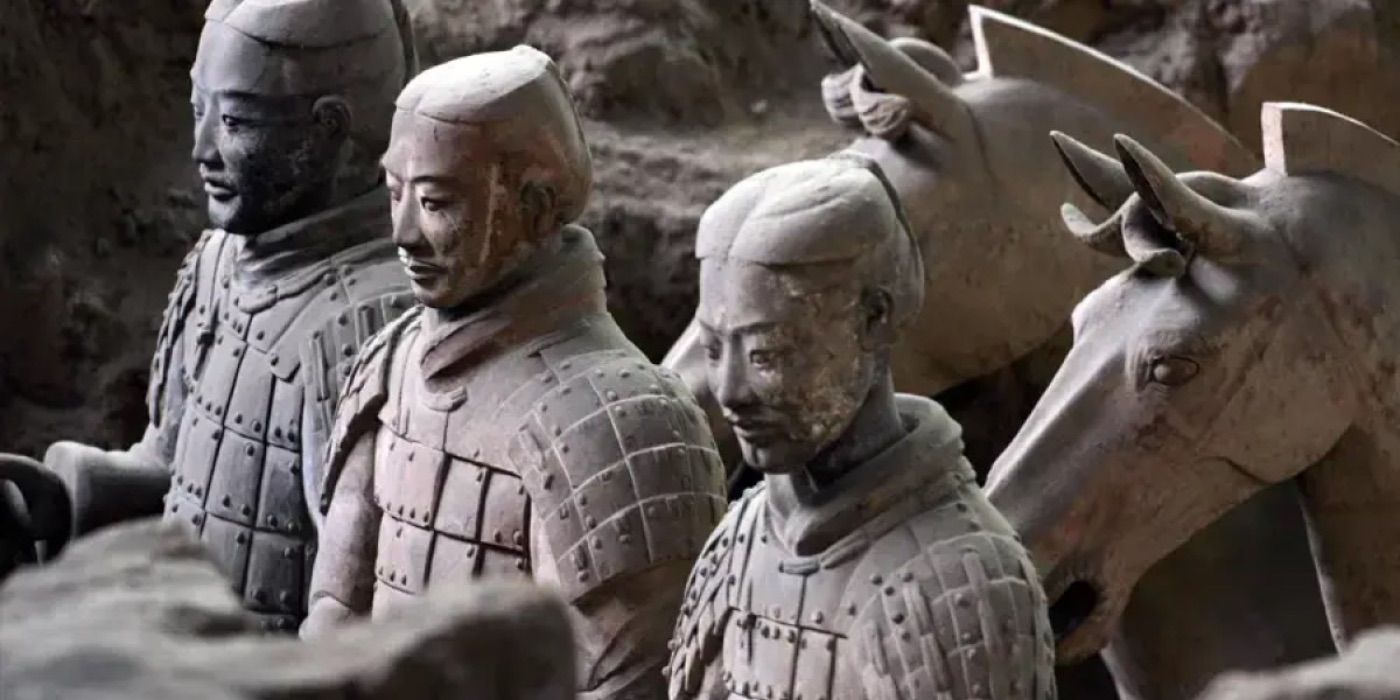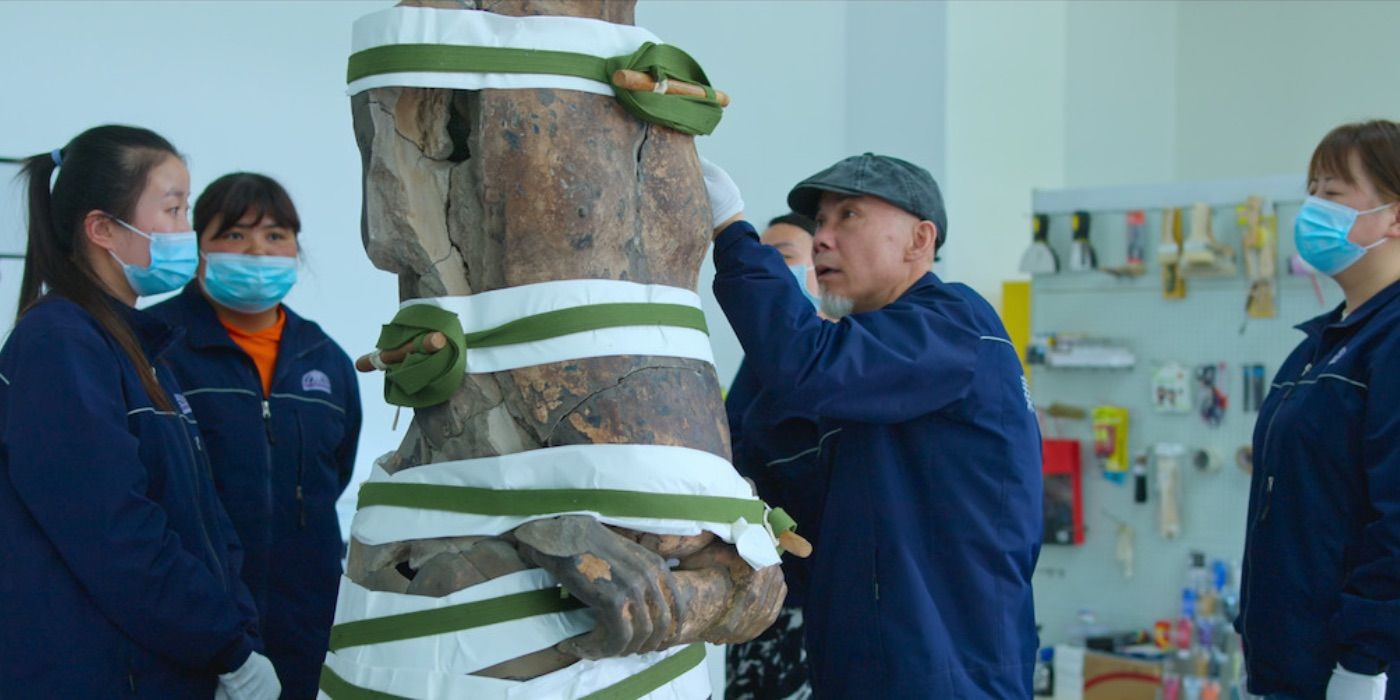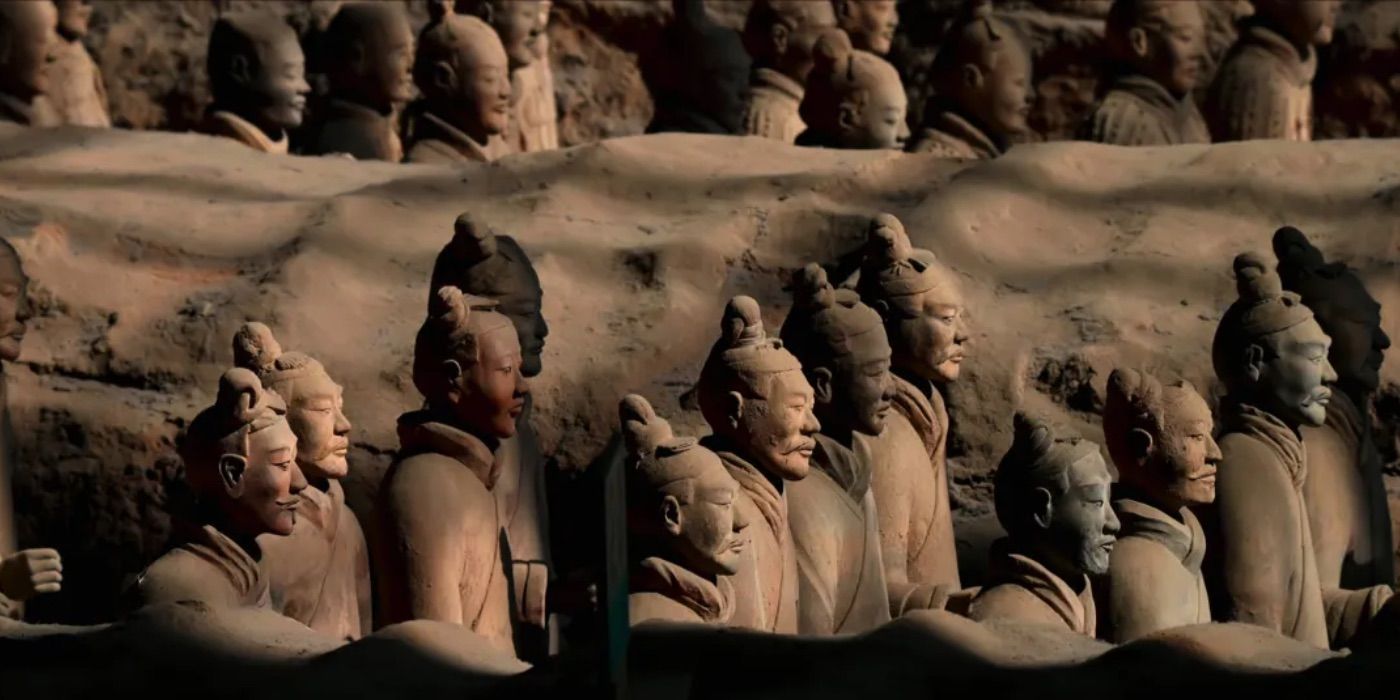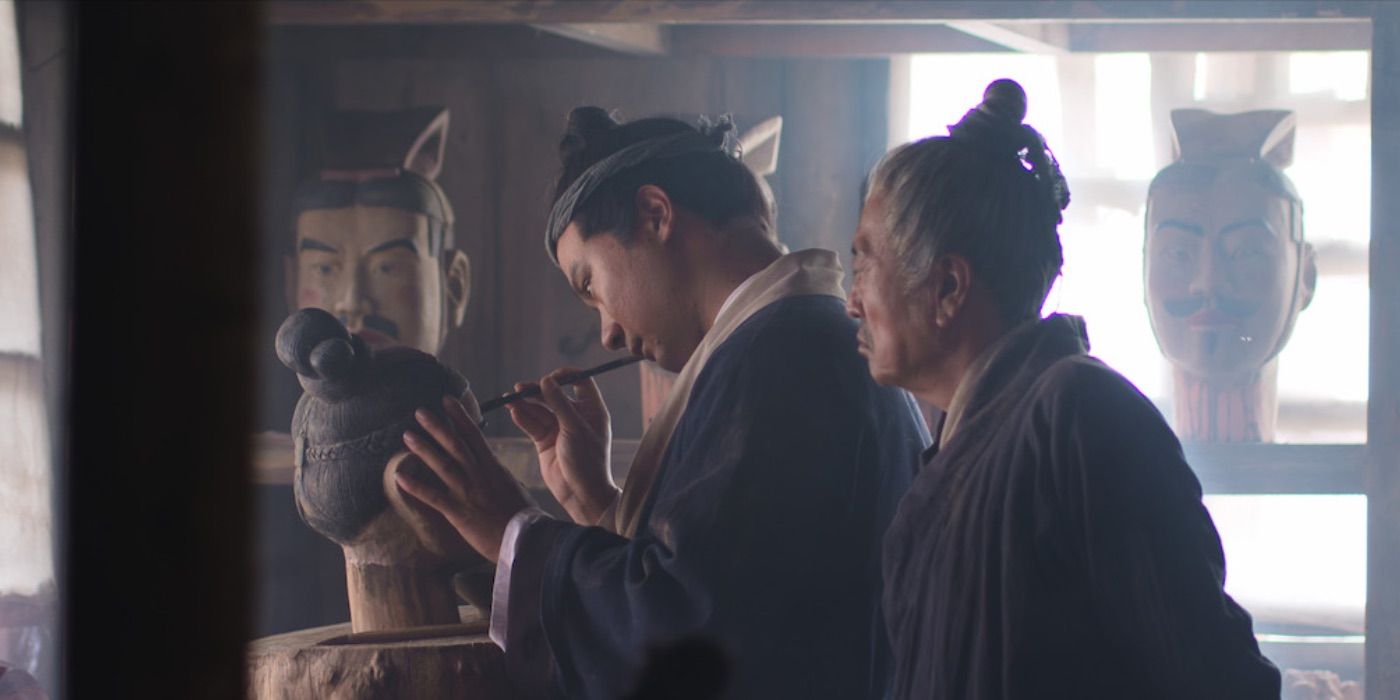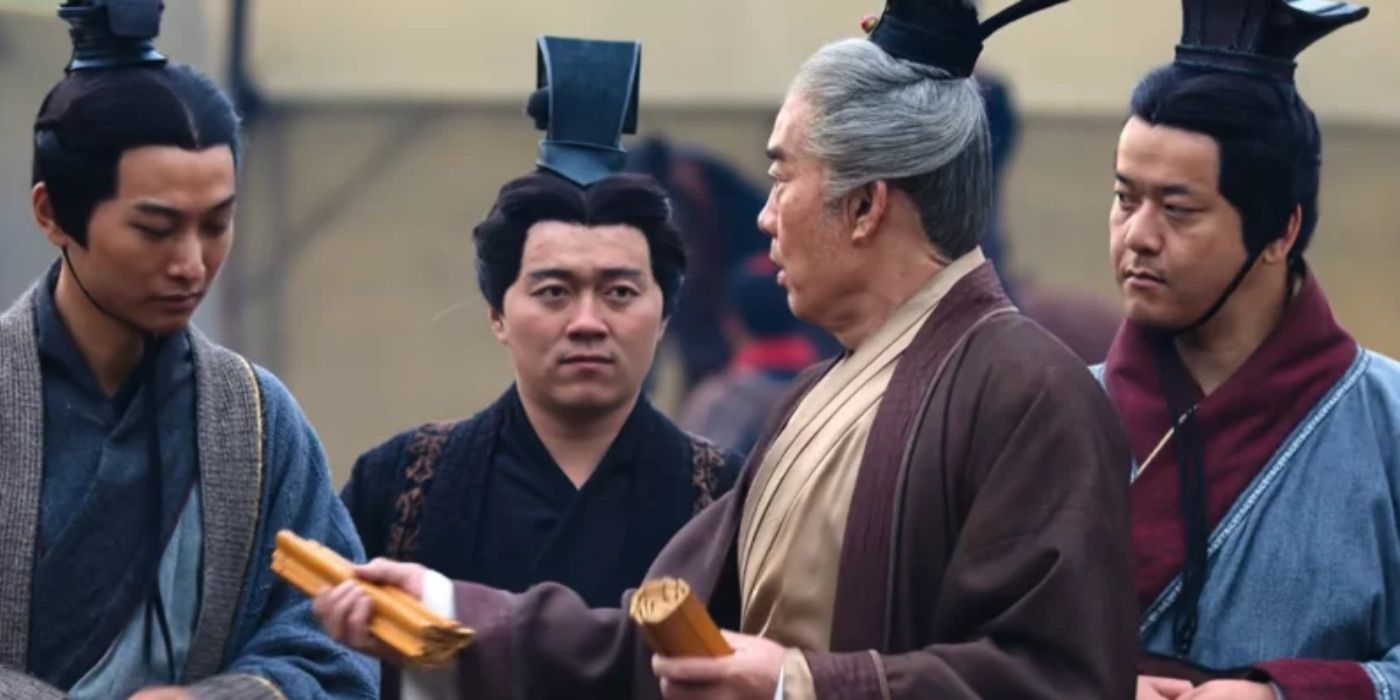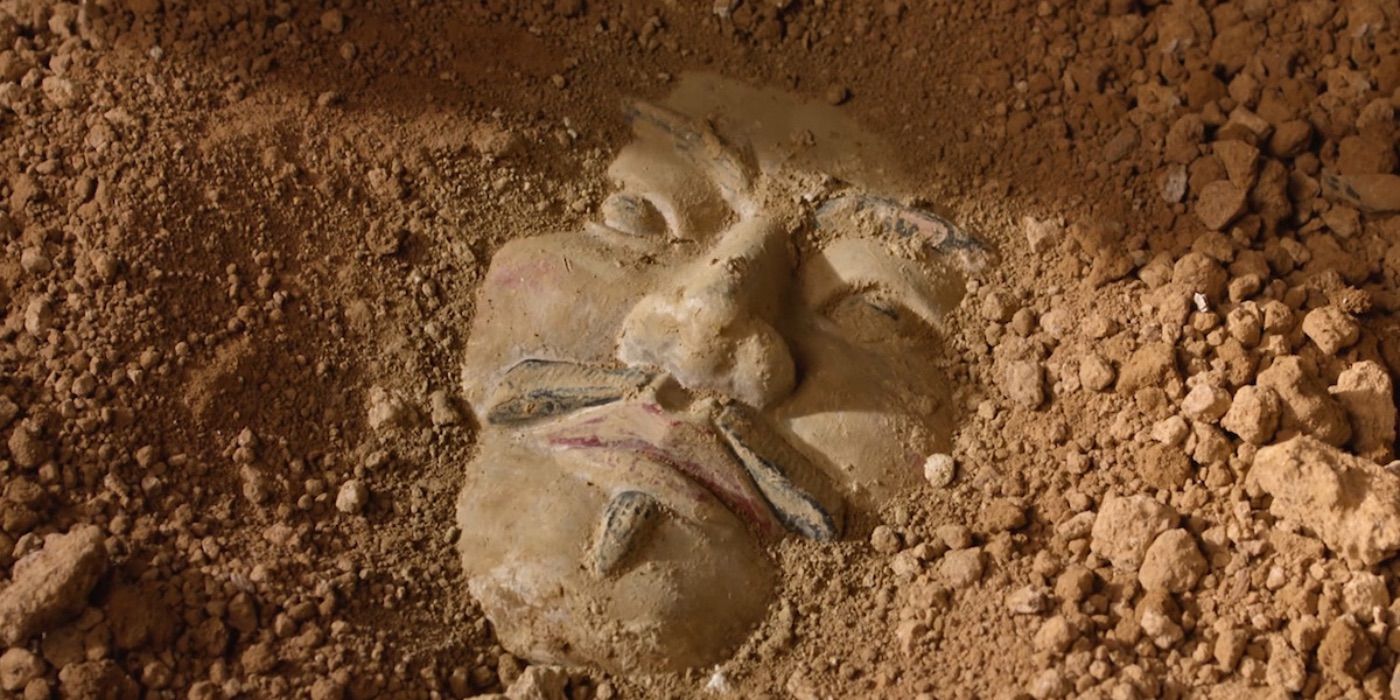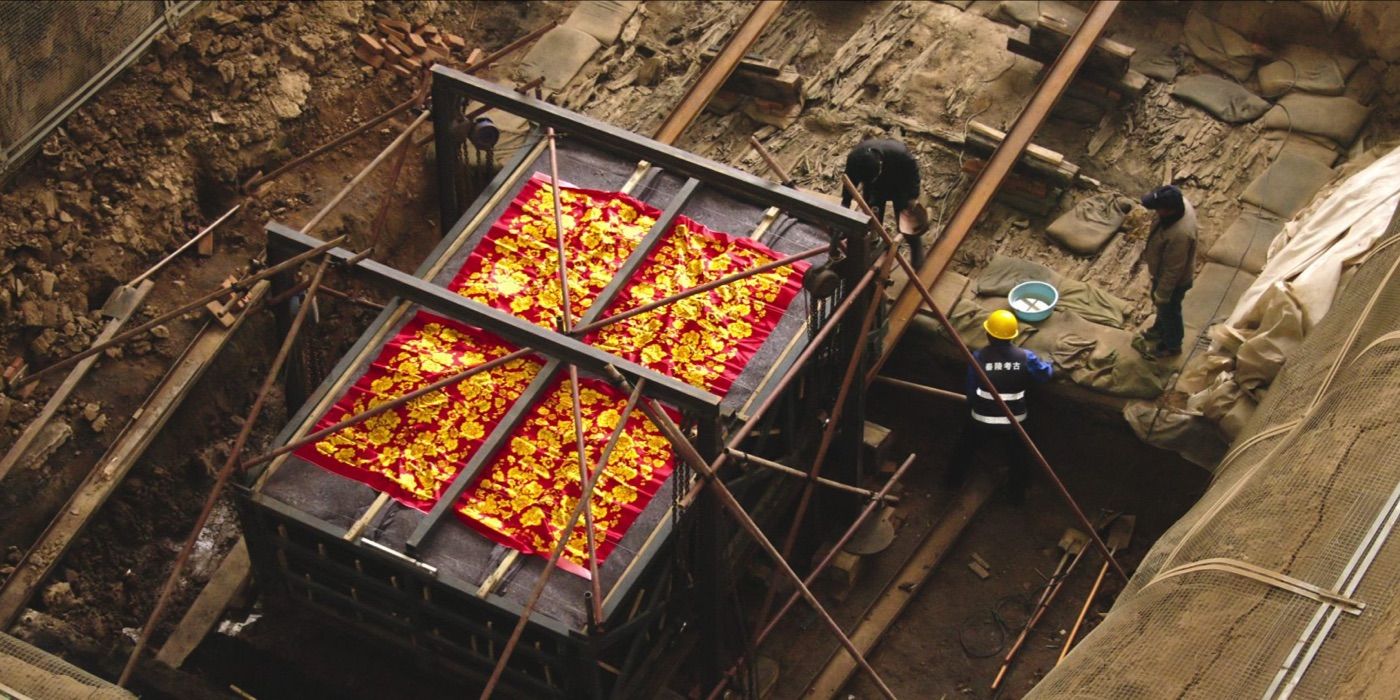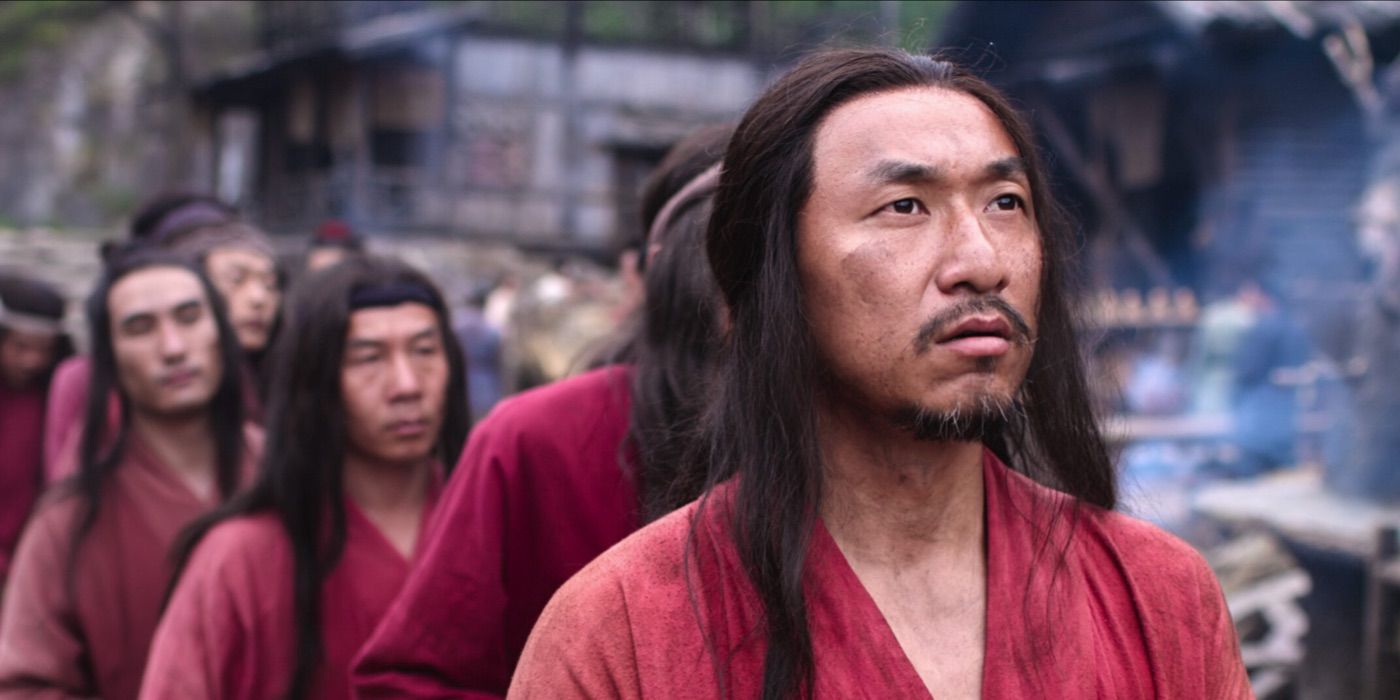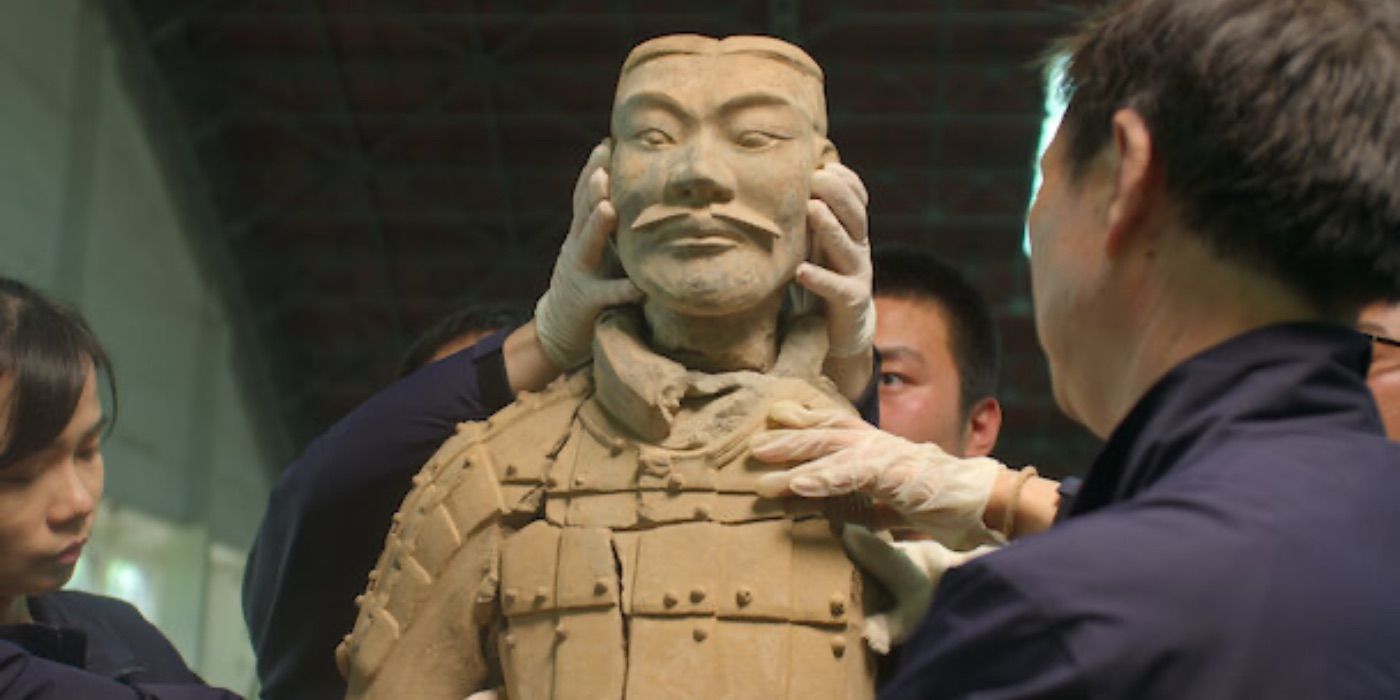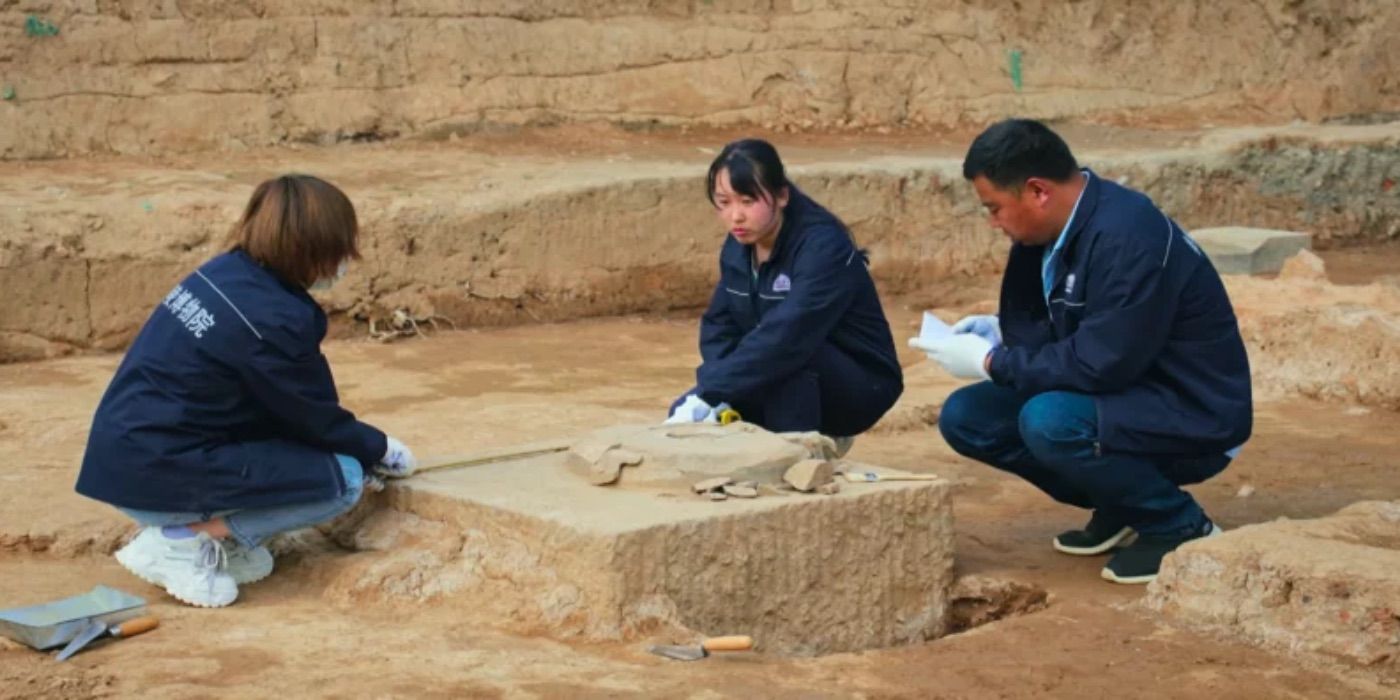Summary
- Netflix’s Mysteries of the Terracotta Warriors delves into the fascinating history of China’s first emperor and his elaborate burial site.
- The documentary reveals the extensive excavation work done at the tomb and the famous terracotta figures accompanying Emperor Qin.
- The film highlights the political intrigue and dark secrets surrounding Emperor Qin’s death, along with the mysteries that still lie buried at the site.
Netflix’s Mysteries of the Terracotta Warriors provides an in-depth look at the tomb of China’s first emperor, and the strange discoveries that have been made on the extensive burial site. Qin Shi Huang unified China in 221 BC by conquering the warring states and forcing them to subject to his rule. His legend has continued long after his death, and it has been revitalized in recent decades with the discovery of his enormous burial complex, filled with the world-famous terracotta warriors.
Mysteries of the Terracotta Warriors is the most recent movie to add to the trend of Netflix documentaries. The streaming giant has a reputation for true-crime documentaries specifically, but it has been steadily expanding into other genres. Now there are plenty of sport and history documentaries on Netflix, including original productions. Mysteries of the Terracotta Warriors has been surprisingly popular upon release, suggesting that there may be more ancient history documentaries coming soon.
10 The Warriors Aren’t The Only Terracotta Figures In The Tomb
The warriors are only the most famous figures
The opening of Mysteries of the Terracotta Warriors provides all the context needed for people who don’t know much about the tomb, and it presents a staggering overview of the archeological discoveries that have been made so far. The tomb’s whereabouts were unknown for thousands of years until they were uncovered by chance. The Chinese government swiftly authorized extensive excavations.
The warriors are accompanied by terracotta acrobats, servants and animals, all designed to assist and entertain the emperor in his afterlife.
Initial excavation work confirmed the suspicion that archeologists had found Emperor Qin’s burial site. The site was far more than just a simple tomb. The entire complex included buildings that covered 60 square kilometres, making it the same size as Manhattan. The terracotta warriors are the most famous element of the tomb, but they are also accompanied by terracotta acrobats, servants and animals, all designed to assist the emperor in his afterlife.
9 Every Warrior Was Smashed To Pieces
Researchers have had to reassemble the figures
Although the images of the terracotta warriors from the burial site are now famous across the globe, they have each been painstakingly restored by experts. Every one of the 8000 warriors that have been found had sustained extensive damage. Some statues were broken into over 4000 fragments, and they have been reassembled by hand. Relatively few figures have been displayed to the public.
The damage to the warriors makes it clear that there was some kind of large-scale vandalism. Statues showed signs of being deliberately smashed and cut by different tools.
The damage to the warriors makes it clear that there was some kind of large-scale vandalism. Statues showed signs of being deliberately smashed and cut by different tools. As a secondary effect, the damage has also highlighted the intricacy of the terracotta soldiers. Although they were designed with the intent of being buried underground so that nobody could see them, the figures are extremely detailed.
8 Work On The Emperor’s Tomb Began When He Was 13 Years Old
The afterlife was always a big concern in ancient China
Emperor Qin’s tomb was planned during his childhood, when he was still just the successor to the throne. At this time, nobody could have anticipated that he would conquer the six Eastern kingdoms and bring them together as a unified state. When he did, his legend and influence grew. This meant that the plans for his tomb had to be revised, and a burial complex befitting China’s first emperor was designed.
His tomb was designed to act as a monument to his greatness for generations, but he didn’t work hard enough to maintain his earthly legacy as China’s first emperor.
Throughout Qin Shi Huang’s life, his death and afterlife were among his main concerns. This reflects how ancient Chinese culture viewed the afterlife. Qin made sure that his tomb would be filled with everything he needed to extend his luxurious lifestyle beyond his death. His tomb was designed to act as a monument to his greatness for generations, but he didn’t work hard enough to maintain his earthly legacy as China’s first emperor.
7 The Tomb’s Construction Was Symbolic Of The Newly Unified Nation
Only a unified China had the resources to build the tomb
Once Qin Shi Huang had united the kingdoms of China under his rule, he set about utilizing his new resources to construct his grand tomb. Qin recruited craftspeople from far and wide to build and paint his terracotta warriors. Since each warrior is unique, he needed master craftspeople, and he wouldn’t have had access to the workforce or the resources before his conquests of the neighboring states.
The tomb also represented the worst parts of China under the rule of the Qin dynasty, as people were forced to relocate and work on a project that offered little value to the public.
The tomb’s incredible scale symbolized the potential of China. It was a massive collaborative project that very few societies in the history of the world at that point could ever have attempted. However, the tomb also represented the worst parts of China under the rule of the Qin dynasty, as people were forced to relocate and work on a project that offered little value to the public. Although the tomb’s construction was an impressive feat, it was all done to serve Qin’s selfish desires.
6 The Emperor’s Death Was Kept Secret By The Conspirators
Emperor Qin failed to name a successor before his death
Mysteries of the Terracotta Warriors combines modern interviews with dramatic reconstructions of Imperial China which bring the stories of the tomb to life. The main narrative throughline of these scenes concerns the struggle for power that took place immediately after Qin’s death. Although Qin wrote a letter just before he died proclaiming that his eldest son should succeed him, his closest advisors had other ideas.
The conspirators hid Qin’s body in his wagon, and they disguised the foul stench of its decomposition by surrounding the wagon with carts of fish.
A conspiracy led by Qin’s youngest son, Hu Hai, and his head servant, Xhao Gao, chose to destroy the letter and forge their own. This second letter granted Hu Hai the throne, but the conspirators had to conceal Qin’s death until the letter was delivered to his eldest son. They hid Qin’s body in his wagon, and they disguised the foul stench of its decomposition by surrounding the wagon with carts of fish.
5 The Emperor’s Concubines Were Killed And Buried Nearby
A jumble of bones were found lying in an unmarked grave
The conspirators felt that they had to consolidate their power by snuffing out any potential dissent. They embarked on a reign of terror in which Hu Hai killed his own siblings and many of his father’s political allies to solidify his claim to the throne. This eliminated most of his potential political rivals, but it also left a lot of people who would soon seek revenge on him.
They embarked on a reign of terror in which Hu Hai killed his own siblings and many of his father’s political allies to solidify his claim to the throne.
One of the most surprising finds at the burial site has been the remains of dozens of women, seemingly dismembered and dumped in a mass grave together. Solving this murder over 2000 years later wasn’t easy, but the history of the era provides some vital clues. The women were Emperor Qin’s concubines, killed at his son’s request after he claimed the throne. It’s still unclear why they were mutilated postmortem.
4 A Mysterious Warrior Was Buried Near The Emperor
A young man was found buried with a small fortune
A large portion of Mysteries of the Terracotta Warriors focuses on a tomb found near Emperor Qin’s burial chamber. The archeologists immediately recognize that the tomb is the final resting place of someone important, probably a military official of some kind, but there aren’t many clues to examine. All that can be ascertained from the remains is that they belonged to a young man, probably between 18 and 22 years old.
It’s possible that the tomb belongs to Prince Gao, who foresaw his own assassination during the purge and volunteered to take his own life to save his family.
One early theory was that the tomb housed one of the conspirators, but this had to be ruled out when analysis showed the age of the man when he died. Hu Hai fell from grace and was buried in a commoner’s grave, while Xhao Gao and other key figures were far too old. It’s possible that the tomb belongs to Prince Gao, who foresaw his own assassination during the purge and volunteered to take his own life to save his family.
3 Construction On The Tomb Ended When The New Emperor Needed To Reallocate Resources
Hu Hai prioritized defending his throne over his father’s tomb
The construction of the tomb required a massive workforce, so Emperor Qin used convicts for free labor. Qin created a stringent legal system that ensured he would always have a steady flow of slave labor. During the Qin dynasty, people who simply associated with criminals would also be jailed and forced to work. These laws sped up construction on the mausoleum.
Emperor Qin created a stringent legal system that ensured he would always have a steady flow of slave labor.
Emperor Qin’s successor, Hu Hai, had to quash a rebellion in the Eastern provinces soon after he took the throne. He reassigned the convicts working on his father’s tomb to fight for him, promising them their freedom in exchange. His convict army managed to defeat the rebels, but this appears to be when construction ended for good. The tomb is barely mentioned in historical sources after this event, and its location was soon forgotten.
2 The Burial Site Was Torched By Hundreds Of People
Researchers found evidence of a huge fire
As archeologists began unearthing different sections of the burial site, they found signs of fire damage in multiple different places. It quickly became apparent that the entire burial site had been subjected to an arson attack, and historians have pieced together what may have happened. The prevailing theory is that Emperor Qin’s tomb was torched after his son’s death as a rebuke of his cruel regime.
Emperor Qin amassed an incredible amount of power during his life, and it’s impossible to do so without making a lot of enemies.
Emperor Qin amassed an incredible amount of power during his life, and it’s impossible to do so without making a lot of enemies. Qin’s harsh practices made him very unpopular among the lower classes. His draconian legal system and his willingness to spend vast public resources on his own tomb are just two examples of his corrupt and self-centered rule. The burning of his tomb symbolized a new era after the Qin dynasty.
1 The Excavation Is Nowhere Near Complete
There are many more treasures waiting to be uncovered
Although countless treasures have been discovered at Emperor Qin’s burial site, Mysteries of the Terracotta Warriors makes it clear that the work is still ongoing. Just 1200 of the 8000 warriors have been reconstructed, the identity of the mysterious warrior remains unknown, and there are large areas which have not been explored at all. There could be more mysteries waiting beneath the soil just like the unknown warrior.
Just 1200 of the 8000 warriors have been reconstructed, the identity of the mysterious warrior remains unknown, and there are large areas which have not been explored at all.
Perhaps the most exciting discovery yet to be made is Emperor Qin’s actual burial chamber. Archeologists are wary of opening the tomb without excessive preparation, fearing that there may be booby traps to ward off grave robbers. Some historical texts claim that Qin’s body is floating on a lake of mercury, as the ancient Chinese thought mercury could halt decomposition, but until archeologists take a look, this may just be a myth.
